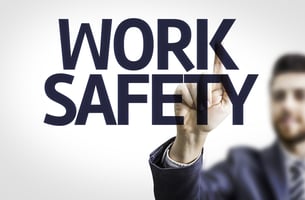The Importance of Workplace Safety and Health Training Training for occupational health and safety...
What is Occupational Health and Safety Management?
Occupational Health and Safety Management Systems (OHSMS)
Occupational health and safety management is the process of setting up systems and procedures to prevent workplace accidents, injuries and illnesses. It includes identifying hazards, assessing risks and implementing controls to mitigate those risks.
An effective occupational health and safety management system will help you to:
- Prevent workplace accidents, injuries and illnesses
- Reduce costs associated with workplace accidents, injuries and illnesses
- Improve productivity by reducing downtime
- Ensure compliance with health and safety legislation
- Make your workplace a safer and more enjoyable place to work
Why is Occupational Health and Safety Management Important?
Workplace accidents, injuries and illnesses can have a devastating effect on businesses, both in terms of the human cost and the financial cost.
Preventing workplace accidents, injuries and illnesses is not only morally the right thing to do, it makes good business sense. By implementing an effective occupational health and safety management system, you can potentially save your business millions of dollars each year.
What are the Benefits of Occupational Health and Safety Management?
There are many benefits of occupational health and safety management, including:
Reduced costs: By preventing workplace accidents, injuries and illnesses, you can reduce the costs associated with these events. This includes things like workers’ compensation claims, insurance premiums, medical expenses and lost productivity.
Improved productivity: When your workforce is healthy and safe, they are more productive. This means less downtime due to accidents and illnesses, and higher morale among employees.
Compliance: Occupational health and safety management can help you to ensure compliance with health and safety legislation. This includes things like hazard identification, risk assessment and control, Safe Work Method Statements (SWMS) and incident reporting.
Training for occupational health and safety Management
Course overview:
This course provides training for occupational health and safety (OH&S) officers in the principles and practices of OH&S management. The course covers a range of topics, including OH&S legislation, risk management, incident investigation, auditing, and OH&S program development and implementation.
This course is designed for OH&S officers who are responsible for developing and implementing OH&S programs in their workplace. The course will also be of benefit to other OH&S practitioners, such as safety coordinators and consultants.
Course objectives:
Upon completion of this course, participants will be able to:
- Understand the principles of OH&S management
- Understand the OH&S legislative framework
- Develop risk management plans
- Conduct incident investigations
- Carry out audits of OH&S management systems
- Develop and implement OH&S programs
Course content:
The course covers the following topics:
- Introduction to occupational health and safety
- The principles of OH&S management
- The OH&S legislative framework
- Risk management
- Incident investigation
- Auditing OH&S management systems
- OH&S program development and implementation.
Duration & Delivery
The course is delivered online and is self paced.
Glossary:
Occupational Health and Safety Management Systems (OHSMS):
An Occupational Health and Safety Management System (OHSMS) is a framework for managing occupational health and safety in the workplace. It includes the policies, procedures and resources needed to ensure the health and safety of employees, contractors and visitors. OHSMSs are usually developed and implemented by businesses, government agencies and other organizations.
Occupational health and safety:
Occupational health and safety (OHS) covers the measures taken in the workplace to protect workers from job-related hazards. This includes things like providing a safe and healthy work environment, providing training on health and safety risks, and carrying out risk assessments.
Hazard:
A hazard is anything that has the potential to cause harm. Hazards can be physical (e.g. electrical equipment), chemical (e.g. hazardous substances), biological (e.g. viruses), ergonomic (e.g. repetitive tasks) or psychological (e.g. stress).
Risk:
Risk is the likelihood that a hazard will cause harm. Risk can be high, medium or low, and is influenced by factors such as the severity of the potential harm, the probability of exposure to the hazard, and the controls in place to mitigate the risk.
Risk assessment:
A risk assessment is a process used to identify, assess and control risks. It involves identifying hazards, assessing the risks they pose, and implementing controls to mitigate those risks.
Safe Work Method Statement (SWMS):
A SWMS is a document that outlines the steps required to safely carry out a task or job. It should be used when there is a potential for harm, and should be specific to the task or job being undertaken.
Incident:
An incident is any event that results in injury, ill health, damage or loss. Incidents can be minor (e.g. a slip, trip or fall) or major (e.g. an explosion, fire or collapsed structure).
Control:
A control is a measure taken to mitigate the risk of a hazard. Controls can be administrative (e.g. policies, procedures), engineering (e.g. guarding, ventilation) or personal protective equipment (e.g. gloves, masks).
Occupational safety:
Occupational safety is the branch of engineering that deals with the design, analysis and improvement of systems, components and work procedures to minimize the risk of injury, ill health or damage to people or property. It includes the identification and control of hazards in the workplace, and the implementation of measures to protect workers from those hazards.
Environmental health:
Environmental health is the branch of public health that deals with the prevention or control of disease, injury and death from exposure to hazardous agents in the environment. It includes the assessment of risks posed by hazardous agents, and the implementation of measures to protect people from those risks.
Safety professionals:
Safety professionals are people who work in the field of occupational safety and health. They may be employed by businesses, government agencies or other organizations, and their duties may include identify hazards, assessing risks, developing controls, conducting audits and investigations, and providing training.
Safety management program:
A safety management program is a systematic approach to managing workplace health and safety. It includes identifying hazards, assessing risks and implementing controls to mitigate those risks. A well-designed safety management program can help to reduce the number and severity of incidents in the workplace.
Health hazards:
Health hazards are agents that have the potential to cause harm to human health. They can be physical (e.g. noise, vibration), chemical (e.g. hazardous substances), biological (e.g. viruses, bacteria), ergonomic (e.g. repetitive tasks) or psychological (e.g. stress).
Health administration:
Health administration is the field of health care that deals with the management and coordination of health care services. It includes the planning, organization, financing and delivery of health care. Health administrators may be employed in hospitals, clinics, public health agencies or other health care organizations.
Safety operations:
Safety operations are the activities and procedures necessary to ensure the safety of people, property and equipment. They may include maintaining safe work practices, conducting safety audits and investigations, and providing training on safety procedures.
Emergency management:
Emergency management is the field of public health that deals with the planning and coordination of response efforts to emergencies.
Regulatory compliance:
Regulatory compliance is the compliance with laws and regulations related to safety, health and environmental protection. businesses, government agencies and other organizations must comply with these laws and regulations to ensure the safety of their employees, customers and the general public.
Workplace inspection:
A workplace inspection is a planned and systematic examination of a workplace to identify hazards and assess risks. Inspections are usually conducted by safety professionals, and they may involve the use of special equipment (e.g. ladders, scaffolding) to access difficult-to-reach areas.
Accident investigation:
An accident investigation is a process of identifying the cause or causes of an accident, and developing recommendations to prevent similar accidents from occurring in the future. Accident investigations are usually conducted by safety professionals, and they may include interviews, site visits, and the analysis of data (e.g. accident reports, maintenance records).
Risk assessment:
A risk assessment is a process of identifying hazards and assessing the risks posed by those hazards. It is used to determine the control measures necessary to mitigate those risks. Risk assessments are usually conducted by safety professionals, and they may include interviews, site visits, and the analysis of data (e.g. accident reports, maintenance records).




